At Junip’s behest, we kept a phenology calendar this spring. That is, we would jot down in small, potentially inscrutable handwriting some natural phenomenon that occurred each day. For example, I cooked the first tiny batch of maple syrup on January 23; tracked a pair of foxes through the snow on February 4; on March 3, we heard a Brown Thrasher singing for the first time and saw the first female Red-Winged Blackbird of the year.
These reports occasionally strayed from strictly natural phenomena and into the realm of human interaction, yet rare on account of the pandemic. March 14: Field Sparrow sings, flapjacks with Butch; February 10: I apparently responded to a concern of Junip by saying
, “just read some Mary Oliver and think about your friends.” Junip may have taken things a step too far when she wrote, on March 4, “Joe scratches butt and talks to himself in kitchen.”In any case, we kept a strong bead on March and early April, documenting Wood Frogs singing in the neighbor’s wetland; Pine Warblers singing and chasing each other around Utah Ridge Pond; Bloodroot rising from our own garden and sending forth delicate, white flowers; and the first thunder. The emergence of butterflies and moths, a sea of Virginia Bluebells in mid-April along the Buckeye Trail, Green Herons returning to the neighbor’s farm pond. The entries become quite sparse
, however, as spring explodes into a billion life forms later in April. After documenting Junip’s favorite, the bumble beetle, visiting the garden on April 20 and a jumping spider in my hair on April 27, we give up entirely.At some point during spring in central Appalachia, all you can do is simply get your butt in the woods as often as possible and drink it up. No time for scratching it, either. Even taking photos or making a list of bird species becomes intolerable because there is surely something you will miss while doing so. Beauty in these woods takes many forms and all are fleeting, save for the big perpetual trees.
A couple of particular beautiful and photosynthesizing spring forms have really spoken to me this spring. First is Fire Pink (Silene virginica)
, which is virtually impossible to not notice. If illuminated by a late afternoon or early morning sunbeam, the glowing red flowers are visible to the naked eye at nearly a quarter-mile. Fire pink thrives on forested slopes where a decent amount of sunlight reaches the forest floor. Flowers like this stop everyone in their tracks , and give the everyday hiker a glimpse into why many of us become obsessed with plants.I have seen a lot of Fire Pink growing on the forested slopes of the Baileys region of the Wayne National Forest, which is burned periodically, but I could find no research confirming a connection with fire. The name must refer strictly to its color; mere speculation, but occasional low-intensity fires could perhaps keep the forest more free of saplings and shrubs, and therefore to the liking of Silene virginica. One study by Charles Fenster and Michael Dudash, published in 2001, showed the most effective Fire Pink pollinator is the equally dazzling Ruby-Throated Hummingbird, which probes the flower for sweet nectar waiting at the flower’s base. You can imagine a hummingbird hovering low, probing the flower with its long bill and tongue, and brushing against the pollen-bearing anthers. Bumblebees and hover flies are also in the pollination mix but their visitation did not lead to the scale of seed production prompted by hummingbirds in the study.
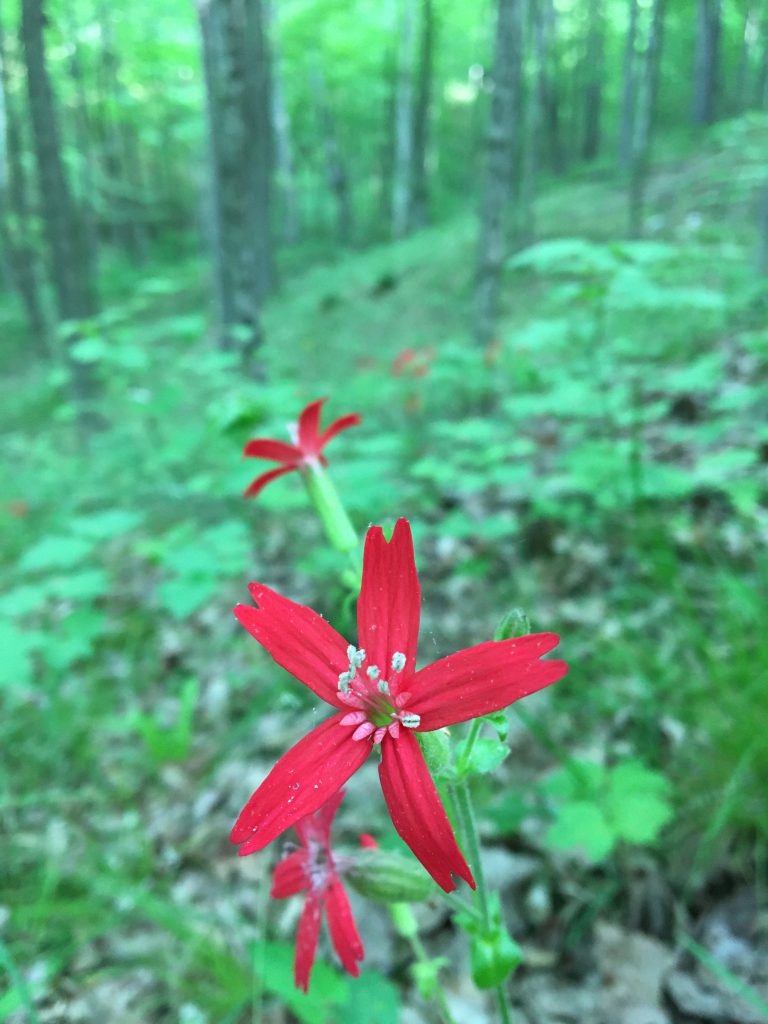
The other standout floral muse for me this spring is Guyandotte Beauty (GB), known to the scientists as Synandra hispidula. Botanists are still puzzling over Synandra’s classification in the Mint family, and it is the only species in its genus. It has big showy white flowers, like full summer cumulus clouds hovering in place. In addition to being a striking mint, the life history and habitat associations with GB are just as intriguing. Synandra is a biennial, which means it develops basal leaves in its first year, flowers in its second year, develops and drops seeds, and dies.
A 2007 USDA publication on GB points out that GB is somewhat rare (though the species is considered globally stable and threatened only on the edges of its range)
, only found in mature undisturbed forests not affected by glaciation. “Because it is associated with other scarce endemic species, it may be appropriate to consider it an indicator of rather special areas of older relic vegetation.” Synandra prefers moist, shaded slopes, calcareous soil (shale or limestone-based), and a lack of disturbance. That is to say , fire or logging would not entice GB to set up biennial shop. Its regular herbaceous companions include Twinleaf and Blue Cohosh, among others. Tree species who share earth with GB include Sugar Maple and American Basswood–classic Mixed Mesophytic Forest as described by the brilliant botanist, Dr. Lucy Braun. As if this species weren’t interesting enough, its reproduction was studied by a local botanist and champion of conservation in Southeast Ohio, Dr. Phil Cantino.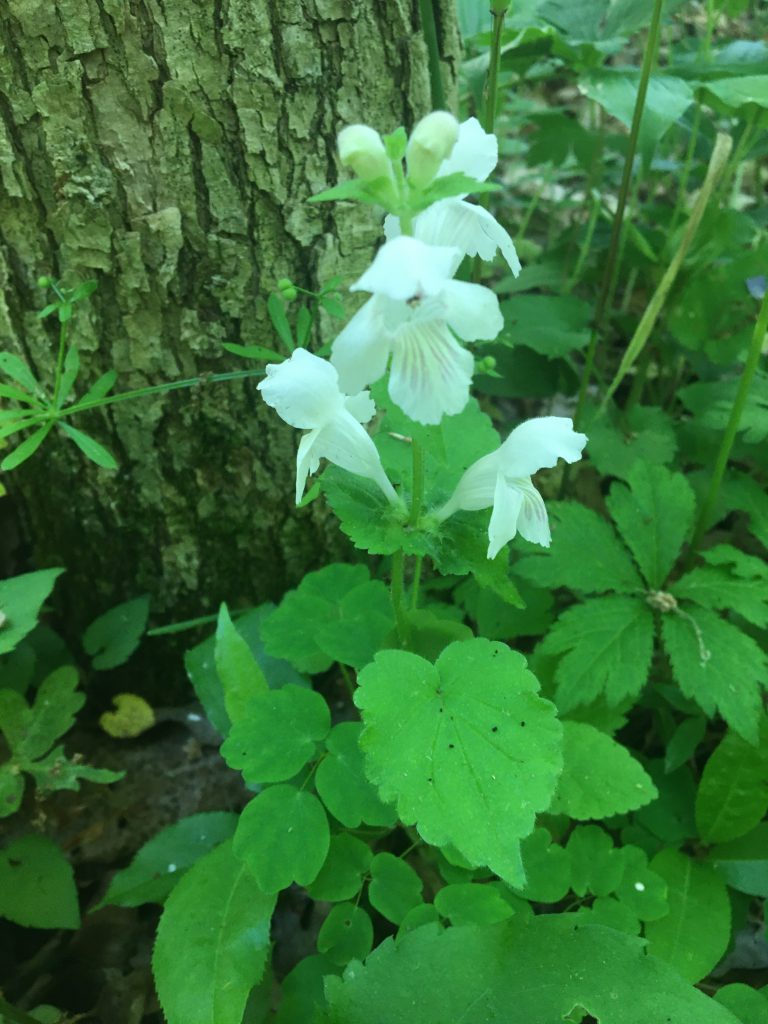
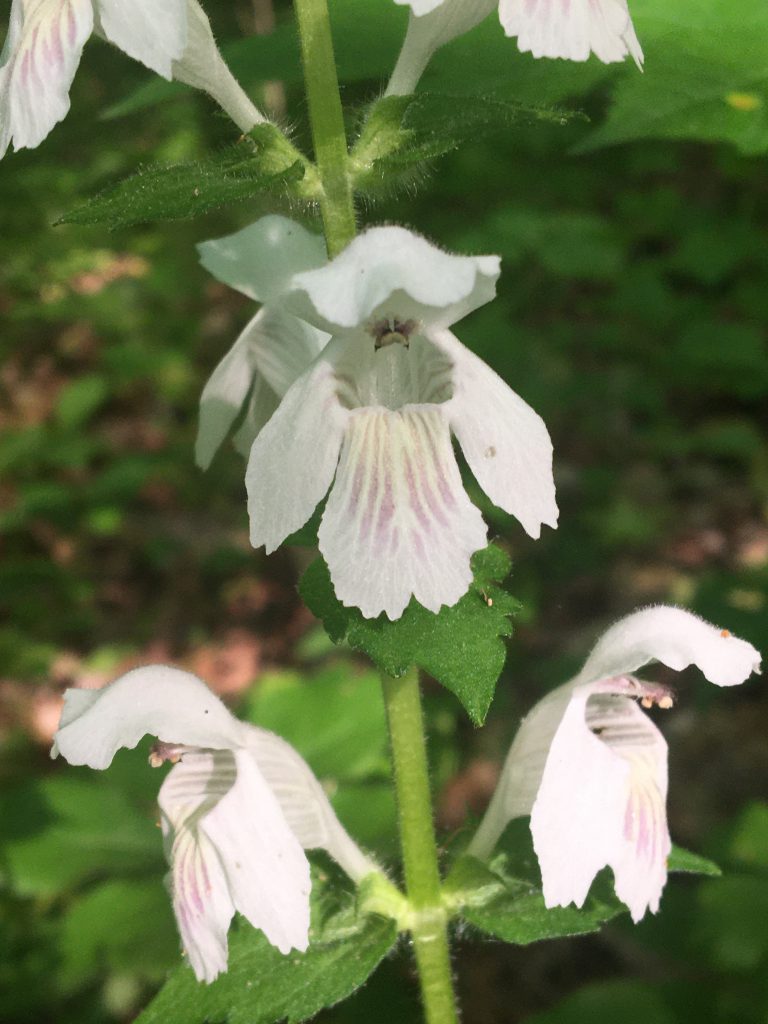
I wish all of you chasers of spring out there happy hunting. I take comfort in knowing there are too many mature forests, even in the county, to check them all for Synandra in any given year. Too many steep headwater streams trickling past big trillium, cohosh, wild ginger, and wood poppies to explore in one spring. Too many Fire Pink flowers to check them all for tiny insects caught in their sticky hairs. Though the phenology calendar is entirely empty this month, make no mistake–it has been full.
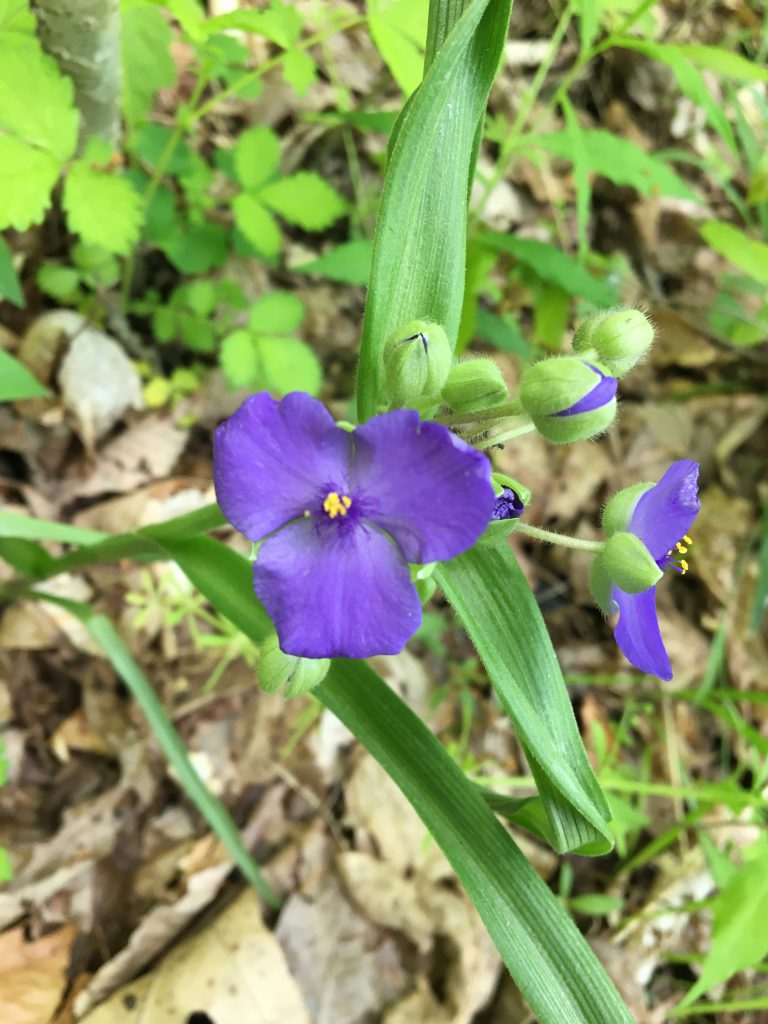
Virginia Spiderwort 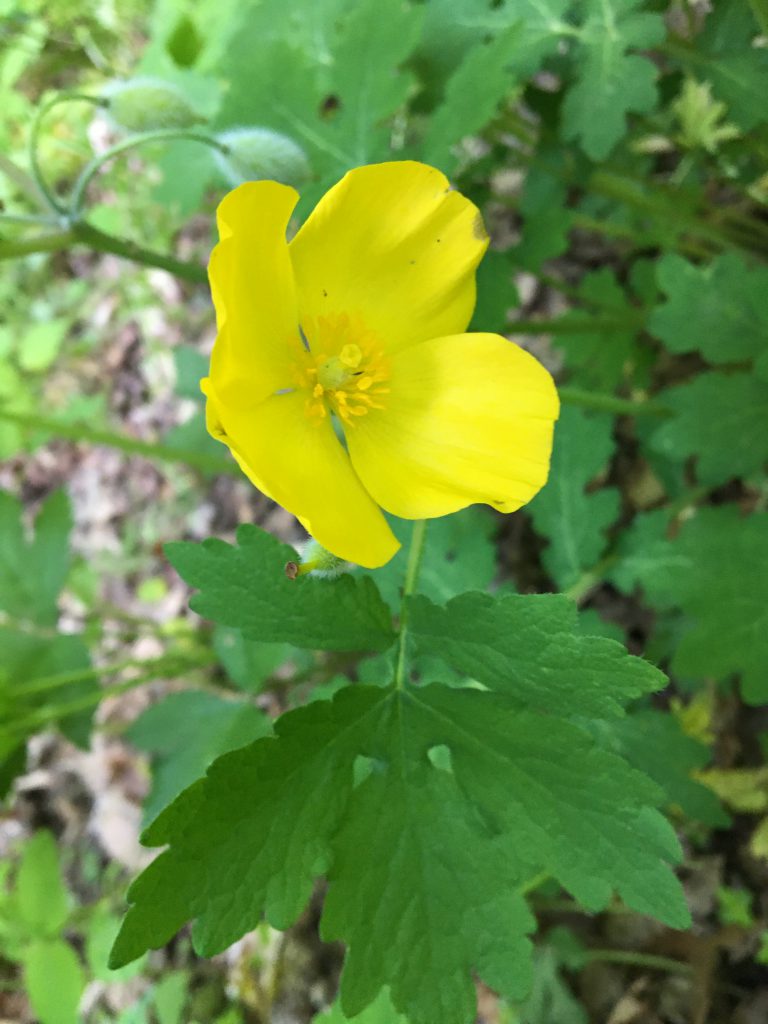
Wood Poppy 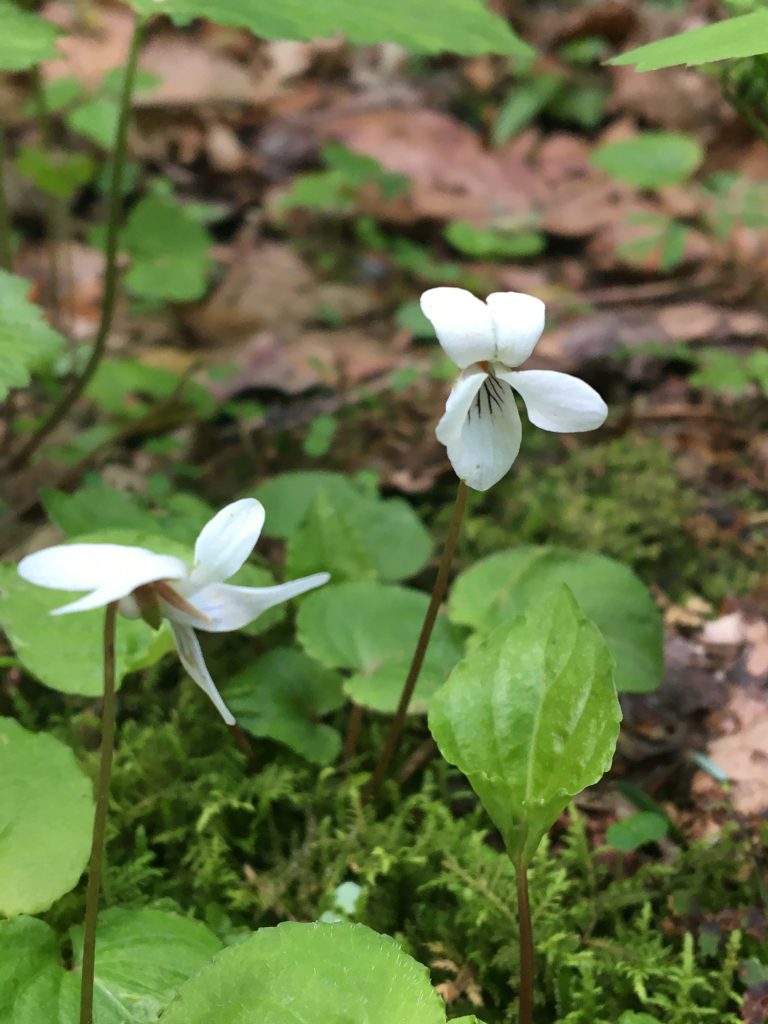
Viola blanda 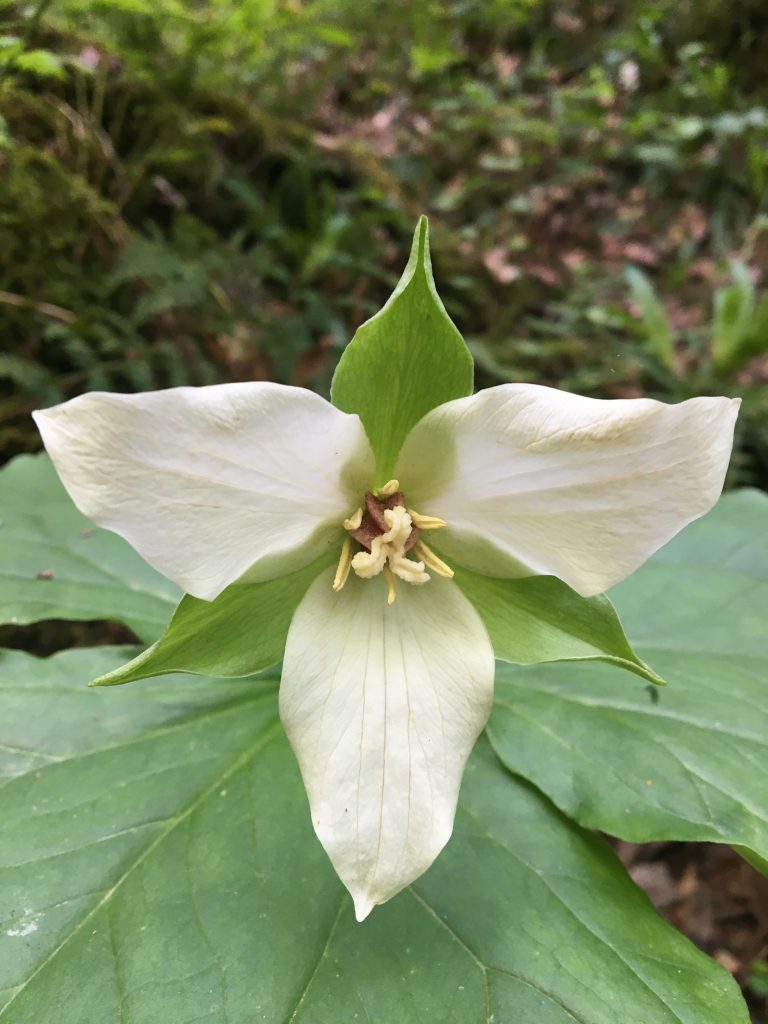
Trillium erectum 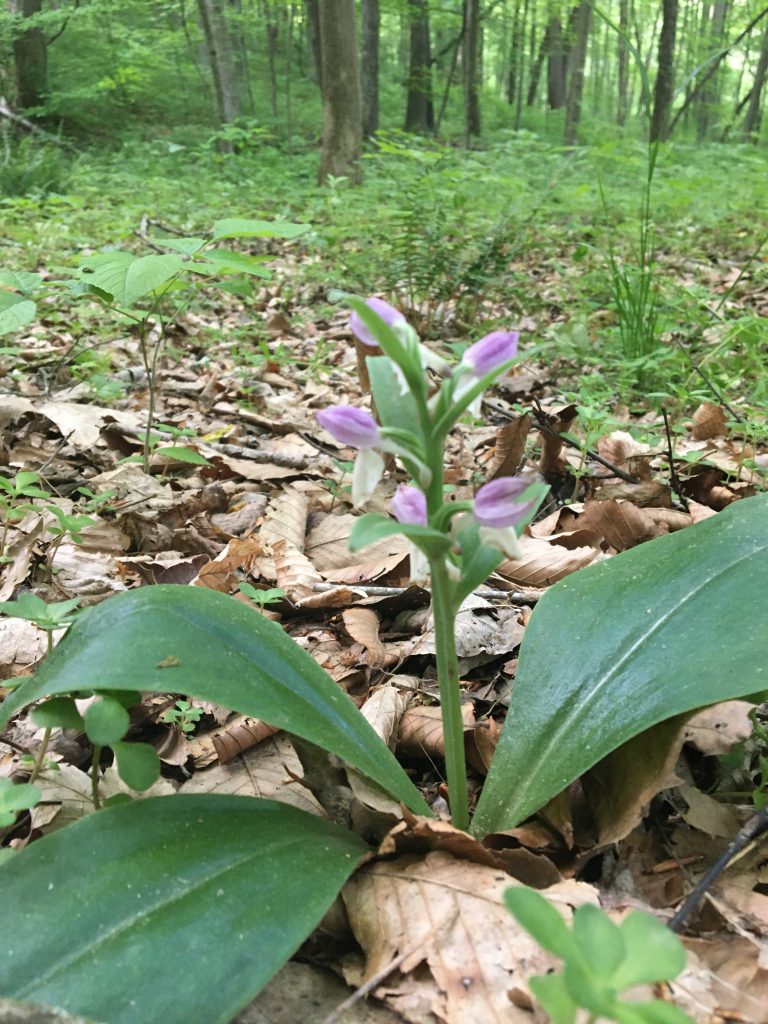
Showy Orchis 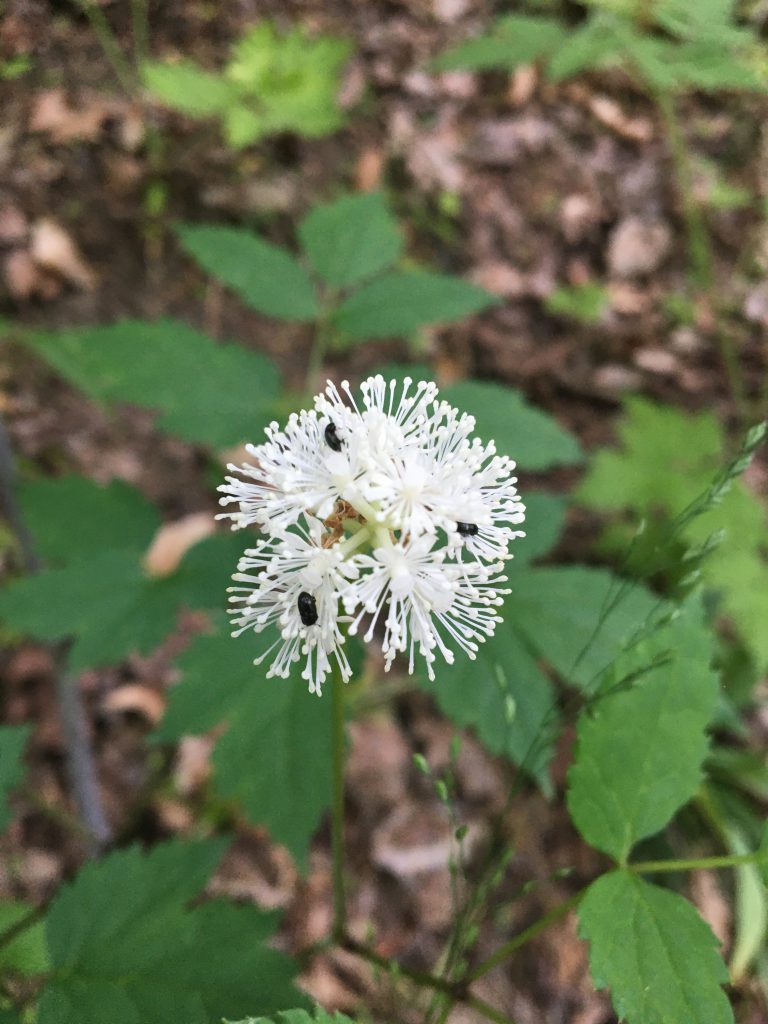
Bugbane with flower beetles
Love the phenology calendar idea. Might steal the idea this fall. At the behest of Natalie Goldberg’s Writing Down the Bones, I’ve been spending a half-hour or so every morning writing random thoughts, and it’s amazing how frequently these rambles lead me into the woods …
Comment by Bob Benz — May 26, 2021 @ 10:16 am
I love the way this is written. It really speaks to the dichotomy of the wonder and urgency of Spring. I have a special place in my heart for spring ephemerals, and I love the challenge of relearning them each year while they’re still around.
Comment by Karley Carpenter — June 9, 2021 @ 11:57 pm
Well, put–wonder and urgency! Nothing like witnessing the forest rising from the dead of winter. Thanks so much for reading and taking the time to comment!
Comment by Joe Brehm — November 27, 2021 @ 12:19 am